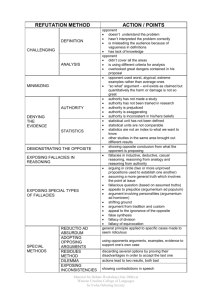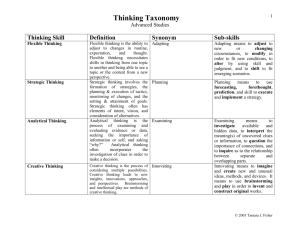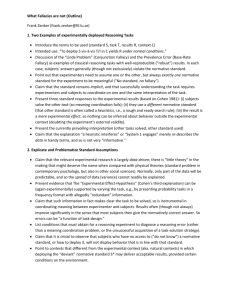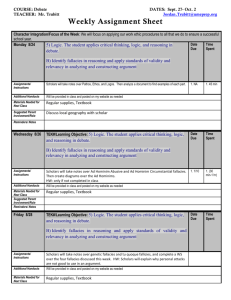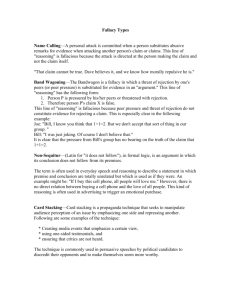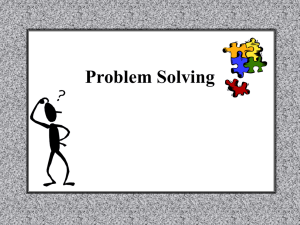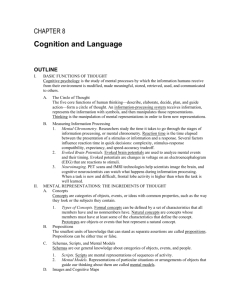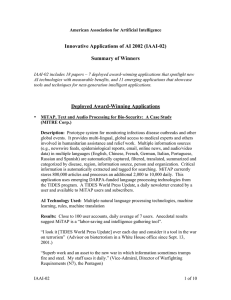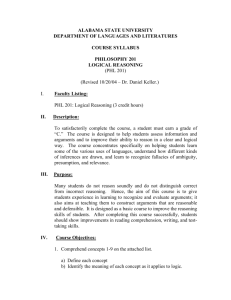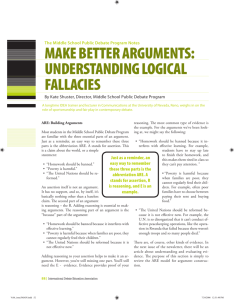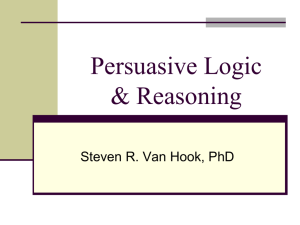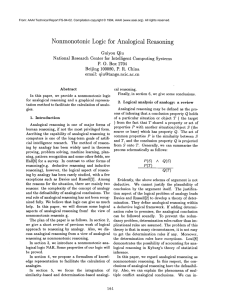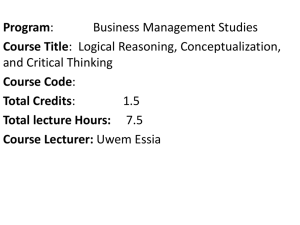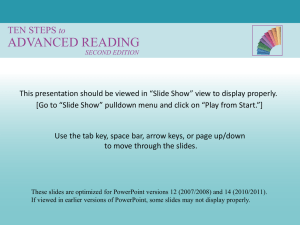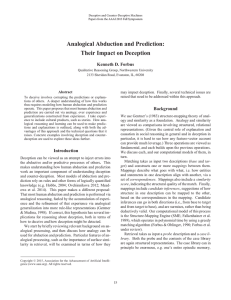Review Sheet for C228 Midterm Examination
advertisement
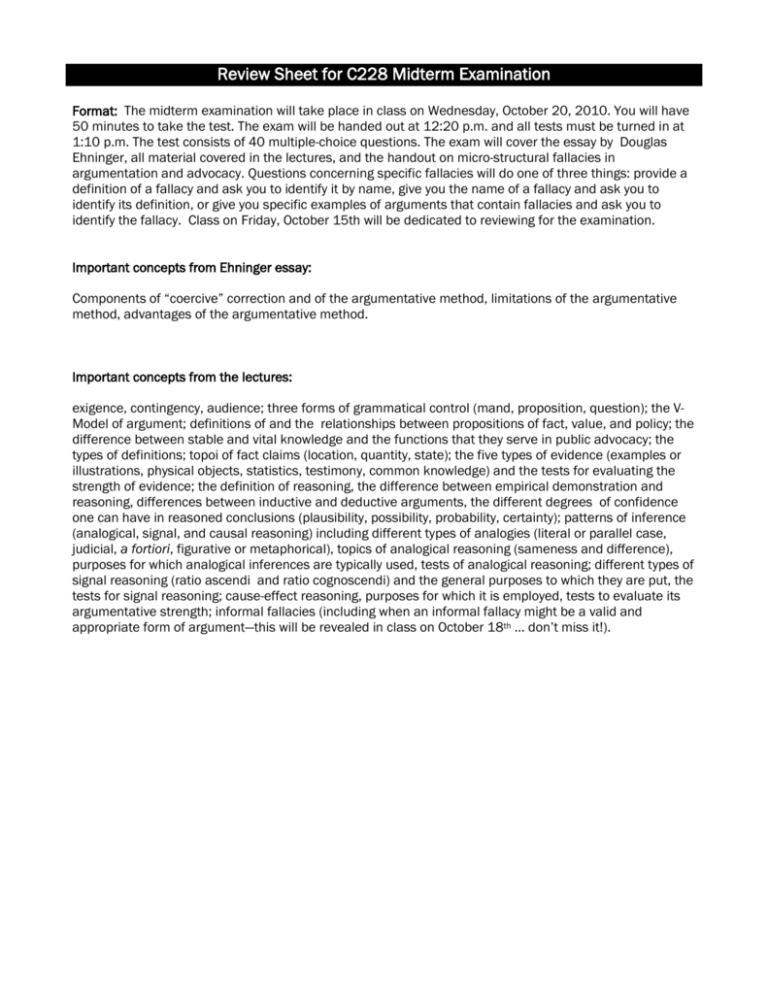
Review Sheet for C228 Midterm Examination Format: The midterm examination will take place in class on Wednesday, October 20, 2010. You will have 50 minutes to take the test. The exam will be handed out at 12:20 p.m. and all tests must be turned in at 1:10 p.m. The test consists of 40 multiple-choice questions. The exam will cover the essay by Douglas Ehninger, all material covered in the lectures, and the handout on micro-structural fallacies in argumentation and advocacy. Questions concerning specific fallacies will do one of three things: provide a definition of a fallacy and ask you to identify it by name, give you the name of a fallacy and ask you to identify its definition, or give you specific examples of arguments that contain fallacies and ask you to identify the fallacy. Class on Friday, October 15th will be dedicated to reviewing for the examination. Important concepts from Ehninger essay: Components of “coercive” correction and of the argumentative method, limitations of the argumentative method, advantages of the argumentative method. Important concepts from the lectures: exigence, contingency, audience; three forms of grammatical control (mand, proposition, question); the VModel of argument; definitions of and the relationships between propositions of fact, value, and policy; the difference between stable and vital knowledge and the functions that they serve in public advocacy; the types of definitions; topoi of fact claims (location, quantity, state); the five types of evidence (examples or illustrations, physical objects, statistics, testimony, common knowledge) and the tests for evaluating the strength of evidence; the definition of reasoning, the difference between empirical demonstration and reasoning, differences between inductive and deductive arguments, the different degrees of confidence one can have in reasoned conclusions (plausibility, possibility, probability, certainty); patterns of inference (analogical, signal, and causal reasoning) including different types of analogies (literal or parallel case, judicial, a fortiori, figurative or metaphorical), topics of analogical reasoning (sameness and difference), purposes for which analogical inferences are typically used, tests of analogical reasoning; different types of signal reasoning (ratio ascendi and ratio cognoscendi) and the general purposes to which they are put, the tests for signal reasoning; cause-effect reasoning, purposes for which it is employed, tests to evaluate its argumentative strength; informal fallacies (including when an informal fallacy might be a valid and appropriate form of argument—this will be revealed in class on October 18th … don’t miss it!).


